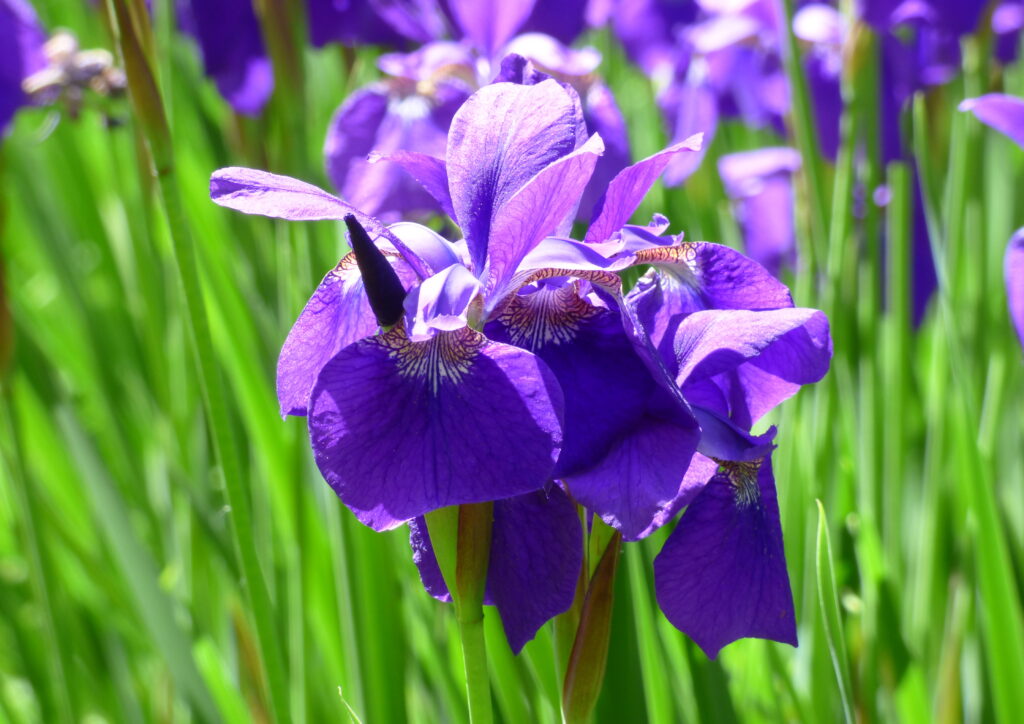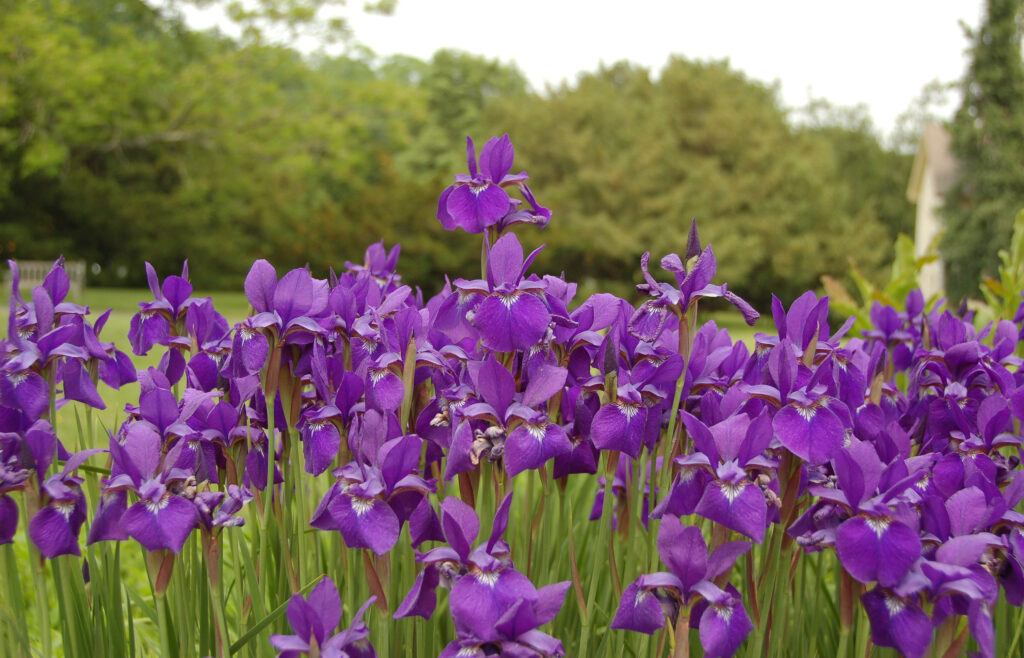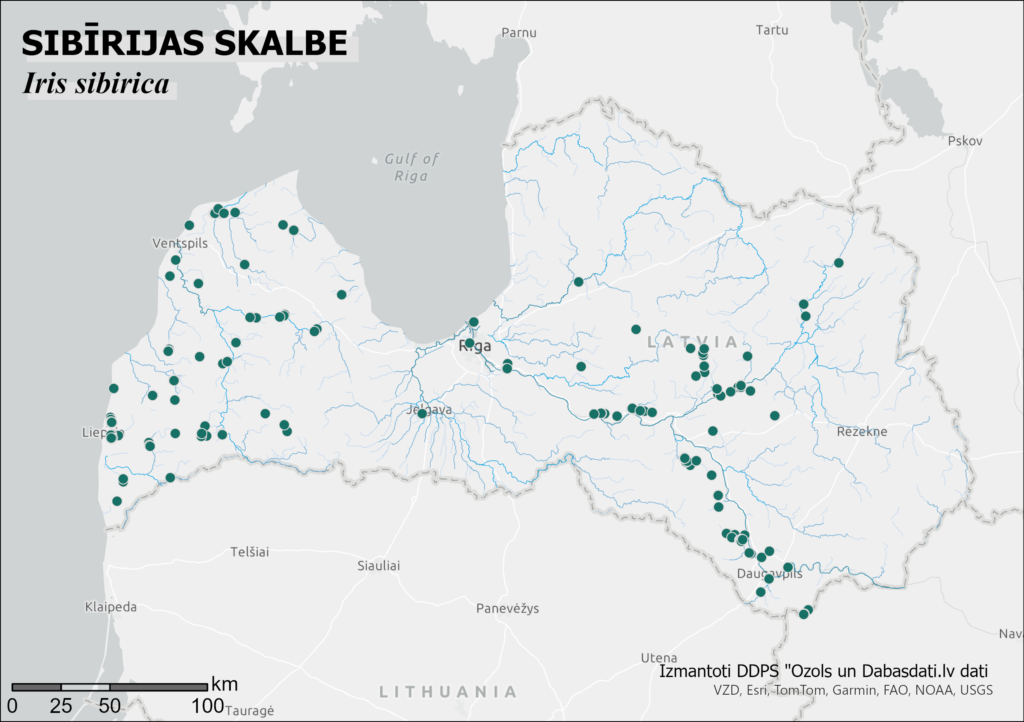Protected species of the month: Siberian Iris
This weekend, many of us will be heading out in search of wildflowers for Midsummer celebrations. Before you go, we encourage you to learn about this month's protected species - the Siberian Iris (Iris sibirica L.), so it doesn't accidentally end up in a Midsummer wreath or festival decorations.

The plant usually stands 70-100 cm tall, with linear leaves up to 40 cm long, sword-shaped, shorter than the stem, arranged in two rows in a rosette, and slightly grooved at the base. The flowers are large and striking, usually 2-3 in a fan-shaped inflorescence.
The outer tepals are bent downwards, dark blue with lighter blue stripes inside. The inner tepals are erect, closed, and dark blue. The style is short, with three petal-like lobes. The Siberian Iris blooms in May and June, so you might come across it while exploring nature at this time!

The species is widespread in Central and Eastern Europe, mainly in temperate and moderately warm zones. In Latvia, the species is relatively rare and unevenly distributed, primarily found in the Coastal Lowland of Western Latvia, Eastern Latvia, and the Daugava River valley and its tributaries in Central Latvia. In Latvia, the species grows near the northern edge of its range.

The Siberian Iris is found in wet and marshy floodplain meadows and outside floodplains, as well as in shrublands. It is mainly threatened by the plowing and drainage of natural grasslands, overgrazing, and the encroachment of natural grasslands. The destruction and fragmentation of natural wet meadows contribute to the decline of its populations and genetic diversity. Given its ornamental value, its habitats are also damaged due to the harvesting of plants and flowers.
